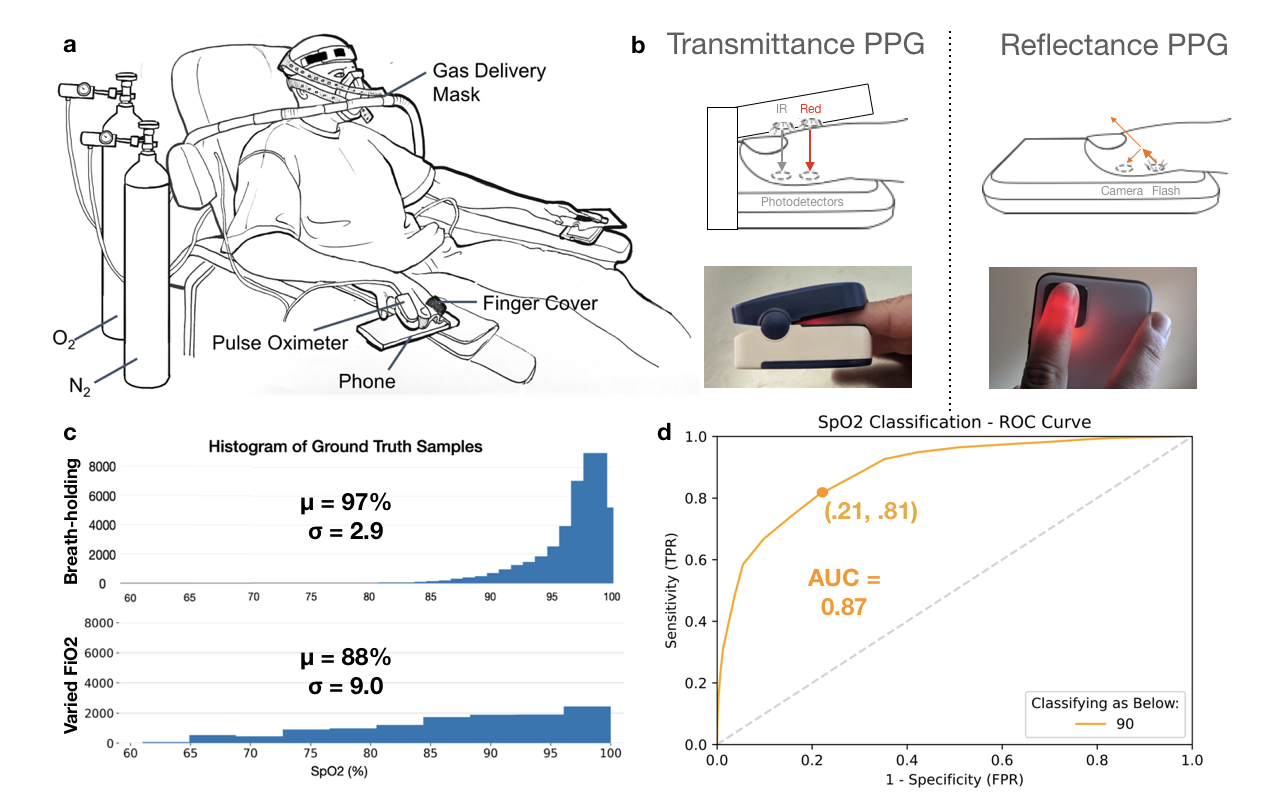@article{hoffman2022smartphone,
title={Smartphone camera oximetry in an induced hypoxemia study},
author={Hoffman, Jason S and Viswanath, Varun and Tian, Caiwei and Ding, Xinyi and Thompson, Matthew J and Larson, Eric C and Patel, Shwetak N and Wang, Edward J},
journal={npj Digital Medicine},
pages={5},
year={2022},
publisher={Springer Nature}
}

